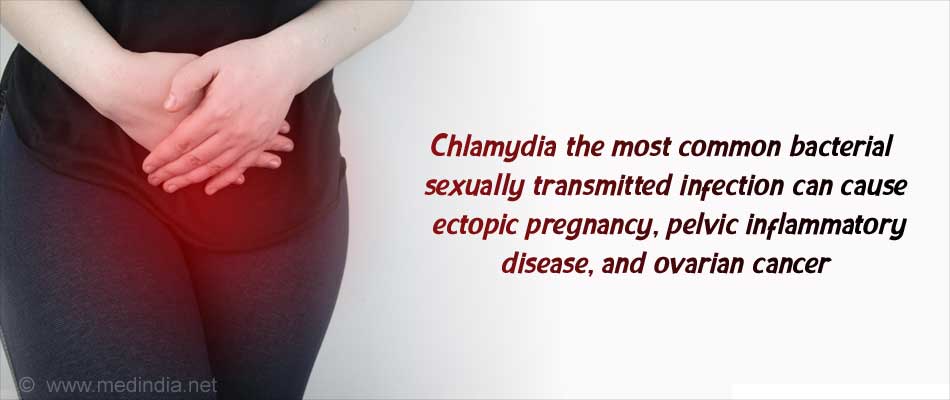
Most infections being asymptomatic, many women are left untreated and are prone to
.
‘Cellular changes triggered by chlamydia, the sexually transmitted infection leave the reproductive tract more susceptible to cancer and ectopic pregnancy.’
Read More..
An abnormal gestation process by which the embryo implants outside the uterine cavity is defined as ectopic pregnancy (EP).
New Hypothesis
Scientists at the University of Bristol and the University of Edinburgh have proposed a possible means through which chlamydia infections could lead to an increased risk of cancer and ectopic pregnancies.
Following a review of the evidence, scientists found that chlamydia trachomatis, the most common bacterial sexually transmitted infection worldwide can stimulate a change in reproductive tract cells. This change known as ‘epithelial-to-mesenchymal transition’ (EMT), can lead to inflammation and cell growth.
This cellular change contributes to the development of other reproductive tract diseases, including cancer and ectopic pregnancies. Their study also found that chlamydia may also be linked to the way that pelvic inflammatory disease is triggered in some women.
Lead investigator Dr Paddy Horner, from the National Institute for Health Research (NIHR) at the University of Bristol said: “Chlamydia is a bacterial infection that stimulates EMT, which may persist after the chlamydia infection has cleared”.
Ovarian and Cervical Cancer Association
Researchers also explained the association of chlamydia with ovarian and cervical cancer by the persistence of EMT changes in combination with DNA damage caused following chlamydia infection.
The EMT cells can impair the integrity of the lining of the infected reproductive tract cell, making it more susceptible to invasion by other bacteria. This increases the risk of pelvic inflammatory disease.
READ RELATED: Coronavirus triggers inflammatory condition MIS-C in children
Furthermore, epithelial cells in the fallopian tube that have previously been infected with chlamydia have more receptors on their surface, which increases the risk of ectopic pregnancy. There is evidence that EMT could cause these cell surface receptor changes.
If this hypothesis about the role of EMT following chlamydia infection in women is correct, it could help explain some of the recent epidemiological observations about chlamydia and reproductive disease.
Early Detection
This hypothesis also supports the idea of Chlamydia Screening Programme’s shift to earlier testing of women. Shorter the duration of infection, the risk of developing EMT changes will be lower.
The development of new tests for identifying women at increased risk of ovarian cancer and ectopic pregnancy can encourage interventions to reduce these risks.
Reacting to the findings, MuniraOza, the director of the Ectopic Pregnancy Trust, said: “This analysis helps to further our understanding of one of the possible risk factors for ectopic pregnancy and we would welcome more research in this area”.
Researchers stresses the need for early hope screening programme and much-needed education to reduce the stigma of chlamydia.
Chlamydia Prevention
- Use condoms during every sexual encounter
- Limit the number of sex partners
- Get regular screenings for sexually transmitted infections
References :
- Is There a Hidden Burden of Disease as a Result of Epigenetic Epithelial-to-Mesenchymal Transition Following Chlamydia trachomatis Genital Tract Infection? – (https://pubmed.ncbi.nlm.nih.gov/34396405/)
- Chlamydia trachomatis – (https://www.mayoclinic.org/diseases-conditions/chlamydia/symptoms-causes/syc-20355349)
Source: Medindia
Source:










